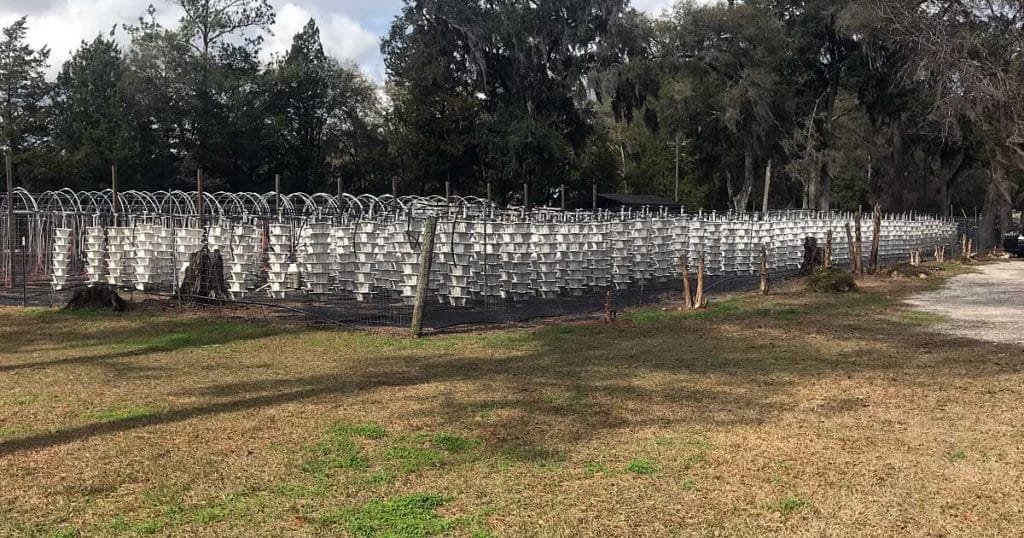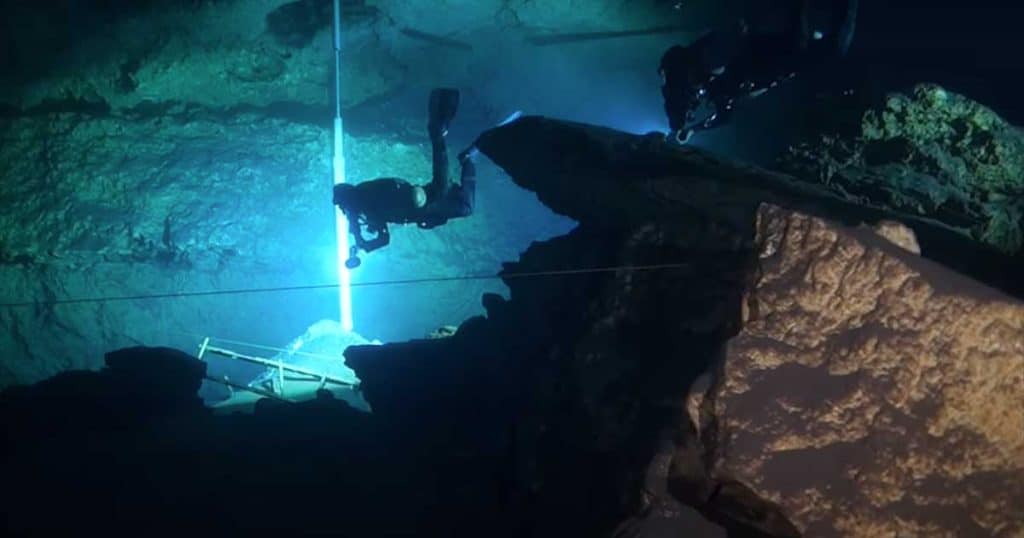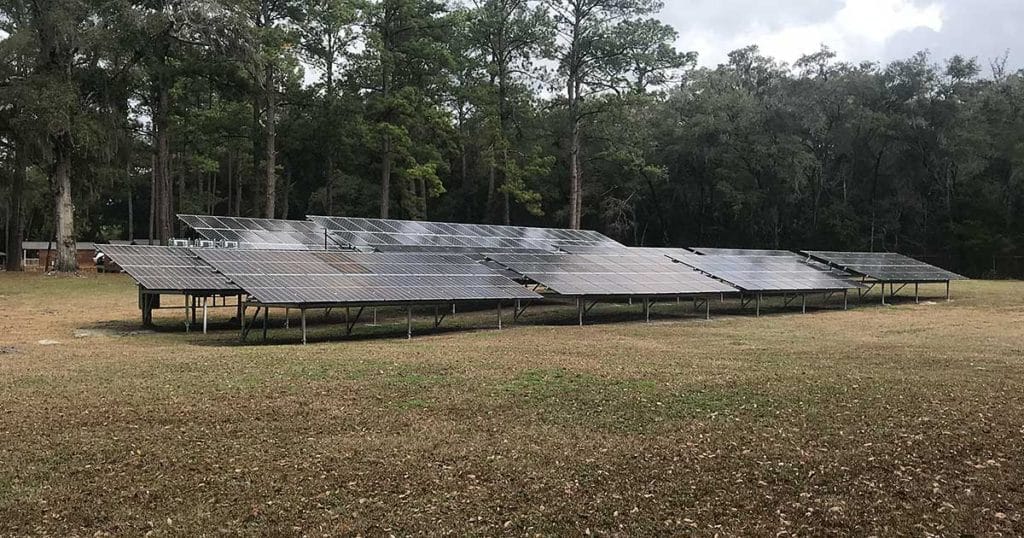There are things about Blue Grotto most visitors don’t know. Here are five of them.
What is that?
Visitors frequently ask about the fenced-off area at the end of the parking lot. This is the one with oddly shaped white flowerpots mounted on poles. The answer is that this is our hydroponic field.
A hydroponic system is one in which plants grow with their roots suspended in nutrient-rich water or other media. In our case, the nutrient stream is provided several times a day to roots suspended in an inert material. We use pearlite for this.
- According to research, hydroponically grown plants are healthier, more nutritious and grow faster. They also yield more. Crops grown hydroponically are typically 20 to 25 percent larger than crops produced in soil.
- Additionally, our half-acre hydroponic field has the potential to produce more crops than we could grow on several acres of soil.
So far, the hydroponic field has been something we have been experimenting with. We did operate the farm successfuly for 15 months but had a difficult time establishing a market. We plan to reopen the facility in stages and will only grow produce that has known consumers.
A unique feature of the hydroponic field is where we get the water from. We will talk about that next.
More than meets the eye
Every diver who visits Blue Grotto is familiar with our open-water basin and the adjacent cavern. But there is more to Blue Grotto than this.
Underneath the end of the parking lot is a football-field-size underwater cave. This is where the water that surfaces in the open-water basin goes before disappearing back underground. From there, it flows in the general direction of Rainbow River. Eventually, it flows into the Gulf of Mexico.
Because this is a cave and not a cavern, only certified cave divers may dive there, and only under certain conditions. For the past several months, high water levels have prevented anyone from accessing the cave.
Now that water levels are dropping, we hope to make the cave available to qualified divers in the near future. When this happens, we will post information on our website.
By the way, there is a reason the hydroponic field is where it is. We get the water for the hydroponics directly from the cave. People tell us this results in better-tasting fruits and vegetables. You’ll have to judge for yourself.
Not just for decoration
Visitors often assume that the two wishing-well-like structures behind Pavilion 7 are purely for decoration. They aren’t. The “wells” protect the openings to two natural solution pipes that lead directly into the cave below.
When water levels are low, cave divers can look up through a crack and see daylight from above. The next time you visit the Grotto, look down the shafts and see what you can see.
Runs on batteries
Sharp-eyed visitors will notice a massive solar array in the southeast corner of the property. These connect to the ten Tesla Powerwall batteries near the top of the stairs to the deck.
The solar array and Powerwalls produce and store enough energy to run everything in the Grotto except for the air compressors. During off hours, we even sell our excess electricity back to the power company.
This is part of our commitment to being the greenest of any north-central Florida dive site.
Just one of many
North-central Florida is widely known as the birthplace of modern cave diving. Despite the appeal for certified cave divers, no less than nine sites in the region are considered appropriate for any certified diver with good buoyancy control skills and who is willing to follow the rules.
Blue Grotto is a great place to base a multi-day trip to explore the area’s dive sites. We are less than an hour from six of these nine sites and less than 90 minutes from the remaining two. You can learn more about these opportunities by clicking the button below.







